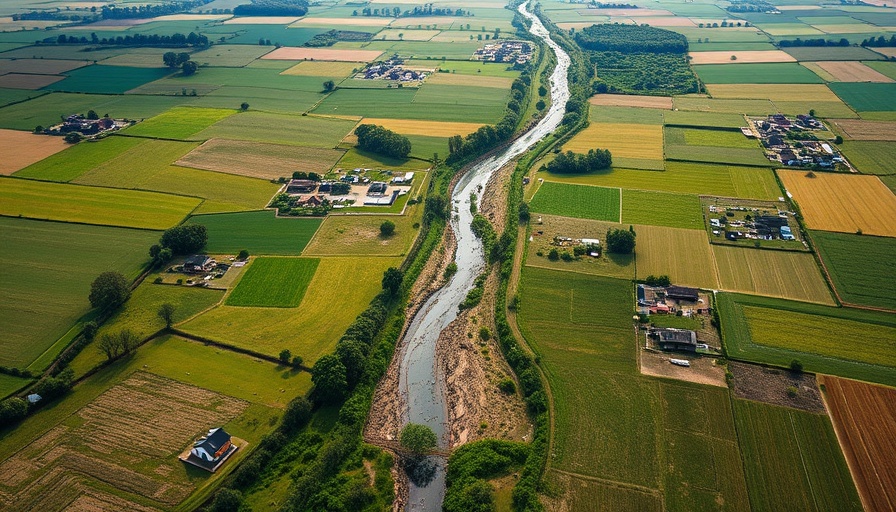
The Tragic Flood of Camp Mystic: A Close Look
In recent days, Texas has witnessed unimaginable devastation as flash floods swept through central Texas, claiming more than 100 lives and leaving over 160 people missing. Among those affected was the beloved Camp Mystic, where families once gathered in joyous summer experiences. Unfortunately, just 48 hours before this catastrophe struck, inspectors approved the camp’s disaster response plan, which raises urgent questions about the adequacy of local safety protocols in face of natural disasters.
Understanding the Recent Flooding Events
The flash floods have swept through low-lying areas, particularly affecting locations along the Guadalupe River where Camp Mystic is situated. Historical data indicates that Central Texas is prone to severe storms, leading to sudden flooding. With climate change intensifying weather patterns, regions must adapt their emergency plans. The recent approval of Camp Mystic's disaster plan by state inspectors highlights both the responsiveness of local authorities and the potential gaps in emergency preparedness. This juxtaposition provides a stark narrative point illustrating a potential oversight in evaluating local safety measures.
The Role of Emergency Preparedness Plans
Emergency preparedness plans are fundamental in ensuring the safety of recreational sites, especially those prone to flooding. While Camp Mystic had its plan approved, the tragic outcome raises the question: how effective are such protocols when disaster strikes? Effective protocols should ensure immediate action, clear evacuation procedures, and proper training for all staff members. Since these plans were sanctioned just days before the disaster, evaluating their thoroughness and execution becomes critical. Many survivors cite confusion and panic during the flooding, signaling a potential breakdown even in approved protocols.
The Emotional Toll on Families and Survivors
The emotional repercussions of this catastrophe are profound. Families of victims now grapple with loss, while survivors are left with haunting memories and survivor’s guilt. Stories emerging from the area echo fears and heartbreak, marking this disaster not only as a significant loss of life but as an event that transforms the very fabric of the community. The complexities surrounding loss and resilience resonate deeply within the Texas community as they navigate healing and rebuild.
Future Considerations: What's Next for Central Texas?
Looking ahead, this disaster serves as a wake-up call. Regulatory bodies may need to review their protocols, ensuring future inspections are comprehensive and consider the evolving nature of climate threats. Increased funding for local infrastructures and emergency services will also be vital in the aftermath of such crises. Enhanced public awareness campaigns about emergency procedures can empower residents and counselors alike, equipping them with information that might save lives in future events.
Legal Implications and Accountability
The aftermath of this disaster also opens up a critical discussion on liability and legal responsibility. When authorities grant approvals for disaster plans merely days before a catastrophic event, liability issues can emerge. Families affected may seek answers on whether proper safety protocols were implemented effectively. This highlights the crucial role legal representatives play in guiding families through the consequences of negligence and understanding the complexities of emergency preparedness laws.
The Need for Community Engagement
The path to recovery begins with community engagement. Local residents and leaders must come together in unity — addressing both the immediate hardships and the need for long-term resilience strategies. By fostering an environment where community members actively participate in discussions around safety, preparedness, and recovery plans, a stronger, more resilient future can emerge. Workshops, town halls, and co-created safety plans can empower the community to take control in the face of unpredictability.
Conclusion: A Collaborative Approach to Resilience
This heartbreaking incident at Camp Mystic underscores the importance of comprehensive disaster preparedness in recreational areas. Combining insights from local officials, community members, and legal experts can create a proactive approach to safety. As Texas begins to heal from this tragic event, the community's determination to strengthen future emergency protocols can ensure that no family has to endure such a loss again.
As you reflect on the implications of this tragedy, consider how knowledge of disaster preparedness can not only safeguard lives but also foster collective resilience within your community. Stay informed with the latest developments in disaster management and make your voice heard in local safety discussions.
 Add Row
Add Row  Add
Add 




 Add Row
Add Row  Add
Add 

Write A Comment